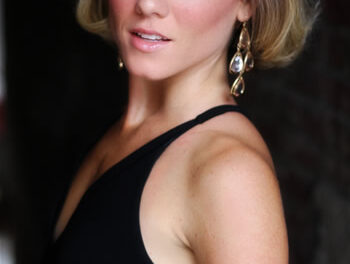Ernest Bloch‘s 1933 Avodath Hakodesh (Sacred Service), a symphonic setting of the Jewish Sabbath morning service, is a major work comparable to the greatest settings of the Christian mass. It is seldom heard in context simply because of its size. Its orchestral requirements: 12 woodwinds, 4 horns, 3 trumpets, 3 trombones, tuba, several percussionists and harpists, celesta, organ, and over 30 string players. To balance an orchestra of this size requires a “symphonic chorus” with more vocal power than the 127 listed members of the Choral Society of Durham can produce. When the number of orchestral players (58 in this performance) exceeds the number of tenors and basses in the chorus (39), a satisfactory balance between vocal and instrumental forces is unlikely.
When conductor Rodney Wynkoop was director of the Duke Chapel Choir as well as the Choral Society, he usually combined both groups when performing major symphonic choral works. Since he retired from the Chapel Choir position, those c. 100 voices were not at hand; they probably would have made for a much more balanced performance. As it was, the orchestra, rarely approaching even a mezzo piano dynamic (admittedly difficult in the resonant Duke Chapel acoustic), often eclipsed all but the highest soprano parts from the choral sound. This was particularly evident in the loudest sections such as the “Adonai yimloch” (The Lord shall reign for ever and ever).
The chorus’ sound was ravishingly beautiful in the sole extended a cappella section of the Service, the music written to accompany the Congregation’s silent devotion: Yihyu lerozon imrei fi / May the words of my mouth…. The Hebrew text, doubtless unfamiliar to most of the chorus, was well done, albeit in the now-common, mostly-Sephardic pronunciation rather than Bloch’s original score’s transliteration of the then-traditional Swiss/German Ashkenazic pronunciation. Whether or not to make that change is open to debate, with no ‘right or wrong’ answer. On the other hand, changing the words assigned to the “Minister” or Rabbi to eliminate male pronouns for the Deity or for humans (i.e., “men” changed to “people” in the Mourners’ Prayer) seemed out of place in a concert performance, for no other reason than that it is not what Bloch wrote in the score. Must we always superimpose 21st century practices on earlier works?
In the role of Cantor, baritone Grant Youngblood was superb, even while having to sing some passages much louder than marked in order to be heard over the orchestra. His operatic experience was beneficial, as he essayed the bravura cantorial writing and high tessitura with ease. This was not his first visit to the Triangle, having previously sung with Wynkoop in Duke Chapel’s annual Messiah performance as well as performing the Britten War Requiem with the NC Master Chorale. The cantor’s (often now called the hazzan‘s) role is omnipresent, from the opening “Ma tovu” (How goodly are thy tents, O Jacob) through the closing Benediction; Youngblood’s strong, assured voice was the glue that held the performance together. Indeed, it conjured up Robert Merrill’s 1961 recording with Leonard Bernstein.
The Chapel was perhaps three-quarters full, which was surprising; given the few chances that one will have to hear Bloch’s greatest choral work performed, why was this not an “SRO” occasion? Even with the orchestral/choral balance problems discussed above, this was a significant performance of one of the 20th century’s finest choral works.
The program notes, written by Eric Meyers and updated for this performance by Susan Dakin, were exemplary in explaining the work’s background as well as the meaning and function of each part of the Sacred Service.











